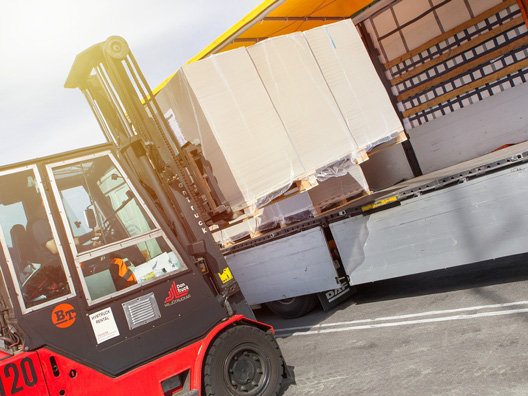We place high demands on our carriers
Every day a large amount of different materials and components arrive at Fiskeby and out comes a finished product that is delivered to customers all over Europe. Since transport emissions account for a significant part of our total air emissions, we take several measures to minimise the environmental impact from our transport.
In order to minimise our transport emissions, we conduct careful evaluations of our shipments of finished product, recycled fibre raw materials, chemicals, fuels and residues. Transport distances are reduced by purchasing as much fibre and fuel as possible in our vicinity. In addition to this, we use electric trucks in the mill area.

Environmentally friendly transport
We are actively working to find alternative transport solutions that meet our customers’ demands for fast and reliable transportation. Today, eco-friendly transport accounts for about 35% of our exports of finished products.
Control of environmental impact
By using well-known transport companies and requiring environmental declarations, we are able to monitor the environmental impact of our transport. This helps us to minimise the greenhouse gas emissions. Hired carriers must sign a shipping declaration.
Environmental declaration for carriers
In the agreements with our truck carriers we have communicated certain environmental requirements they must fulfill. Each year the carriers are obliged to submit a declaration describing their environmental efforts.
Aside from requesting information about what type of fuel the carriers use, Fiskeby also checks how many of the drivers are trained in ecodriving. In addition, we make clear that the load capacity should be as close to 100% as possible.
Transportation risk assessment
We carry out regular risk assessments for the transports arriving and departing from Fiskeby. The assessments concern heavy transport and dangerous goods as well as internal traffic and employees walking to and from their workplaces. Based on the risk assessments we address and ensure the areas that are at greatest risk.
